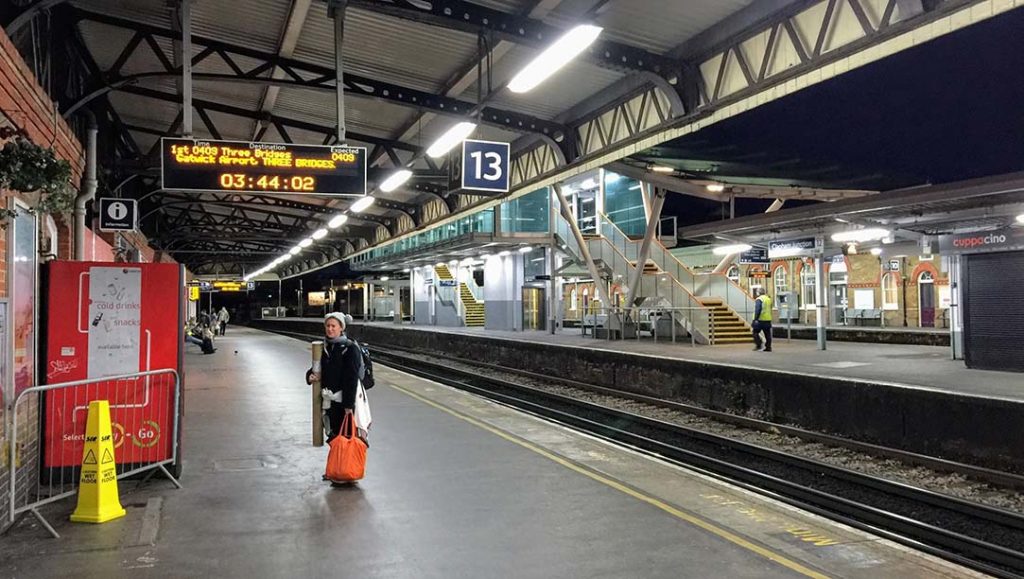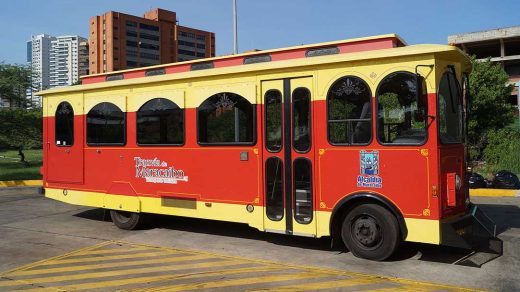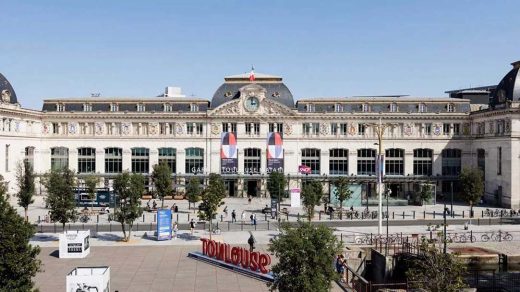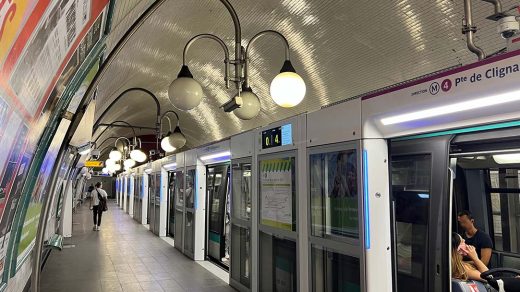- Overview of Croatia’s transportation system, highlighting its significance for travelers.
- Introduction to the diversity of transport modes available in cities and rural areas.
Zagreb: Exploring Croatia’s Capital
Zagreb boasts an extensive tram network, considered one of Europe’s oldest and most efficient. The system covers the entire city, making it an excellent way to explore Zagreb’s landmarks and neighborhoods.
Routes and Coverage: The tram system consists of 15 daytime lines (daytime operations from 4:00 AM to 12:00 AM) and 4 night lines (running from 12:00 AM to 4:00 AM). Lines cover major areas of the city, including the city center, main railway station, and residential districts.
Frequency and Operating Hours: Trams are frequent, especially during peak hours, with an interval of about 5-15 minutes. Services operate daily, ensuring convenient travel at almost any time of day or night.
Ticketing and Fares: Tickets are purchased at kiosks, Tisak newspaper stands, or at ZET (Zagreb Electric Tram) selling points. Single-ride tickets are valid for a limited duration and offer unlimited transfers within the stipulated time. Tourists might consider purchasing the Zagreb Card, allowing unlimited rides on public transport and free entry to several museums and galleries.
Bus Services in Zagreb
Aside from the efficient tram network, Zagreb’s bus system is another integral part of the city’s public transportation.
Bus Routes and Connections: Buses cover areas that trams might not reach, connecting suburban neighborhoods and reaching farther out into the city’s outskirts. Routes are well-connected, providing access to various tourist attractions, shopping centers, and residential areas.
Fares and Tickets: Similar to trams, tickets for buses can be purchased at kiosks, Tisak newspaper stands, or at ZET selling points. Tickets are valid for a certain duration and permit transfers within that timeframe.
Alternative Transport Modes
In addition to trams and buses, alternative modes like taxis and ridesharing services offer convenience, especially for travelers with specific itineraries or those looking for personalized transport options.
Taxis: Taxis are readily available throughout the city, often stationed near major attractions, hotels, and transport hubs. They provide a convenient mode of transportation, especially for travelers with luggage or specific destination requests. However, it’s advisable to use licensed taxi services and ensure they use the meter.
Ridesharing Services: Popular ridesharing apps offer another alternative for getting around Zagreb. They’re generally easy to use and provide flexibility, allowing users to choose their pick-up and drop-off locations.
Recommendations for Efficient Navigation
- Planning Ahead: Study tram and bus routes in advance, making note of attractions or areas of interest along the way.
- Use Digital Apps: Various mobile apps provide real-time information about tram and bus schedules, helping you plan routes and optimize travel time.
- Zagreb Card Advantage: Consider purchasing a Zagreb Card, not just for unlimited travel but also for its additional benefits.

Dubrovnik: Unraveling the Pearl of the Adriatic
Dubrovnik’s Bus Network
Routes and Coverage: Dubrovnik’s bus system is comprehensive, covering the city center, suburban areas, and nearby towns. Buses are a convenient way to explore the Old Town, Lapad, Babin Kuk, and other popular tourist destinations. They also connect to the airport.
Frequency and Operation Hours: Buses operate frequently, with good service during the day and into the early evening. Night buses cover certain routes during the late hours.
Ticketing and Fares: Tickets can be purchased onboard or at kiosks. Passes for multiple rides or daily tickets are available, allowing unlimited travel within the specified duration. It’s advisable to buy a Dubrovnik Card, which includes public transport usage and access to several attractions.
Ferries and Boats
Island Connections: Ferries and boats are essential for exploring the nearby islands. Services operate regularly, connecting Dubrovnik to islands like Lokrum, Lopud, Sipan, and Korcula, providing opportunities for day trips or longer stays.
Ticketing and Schedules: Ferry schedules can vary by season, so it’s recommended to check timetables in advance, especially during peak tourist months. Tickets are usually available for purchase at ferry terminals or online.
Exploring Dubrovnik’s Historic Sites
Old Town Accessibility: Within Dubrovnik’s Old Town, walking is the best way to explore its narrow streets and historic landmarks. The town is mostly pedestrianized, allowing visitors to leisurely wander through its charming alleys and squares.
Local Transport Options: Besides buses, taxis are readily available in Dubrovnik, especially near the Old Town and major hotels. They’re a convenient option for specific destinations or if you’re short on time.
Travel Tips for Public Transportation in Dubrovnik
- Plan Ahead: Familiarize yourself with bus schedules and ferry timetables to optimize your travel around Dubrovnik and nearby islands.
- Purchase Multi-Day Passes: If you plan to use public transport frequently, consider buying multi-day passes or tourist cards for cost-effective travel.
- Mind the Crowd: During peak tourist seasons, buses and ferries can get crowded, so try to avoid peak hours if possible.
Dubrovnik’s public transportation system offers excellent options for exploring the city and nearby regions. It’s a convenient and affordable way to navigate around and discover the stunning Adriatic coastline.
Split: Gateway to Dalmatia
Extensive Routes: Split boasts an extensive bus network, connecting various neighborhoods within the city and nearby towns along the Dalmatian Coast. Buses are a convenient way to travel to attractions like Marjan Hill, Bacvice Beach, and the Old Town.
Ticketing and Passes: Bus tickets are purchasable from kiosks or onboard. Passengers can buy single tickets or opt for day passes for unlimited travel within a specified timeframe.
Frequency and Operation Hours: Buses generally operate frequently during the day. Night buses are available on selected routes, especially during peak tourist seasons.
Island Connections
Ferry Services: Split serves as a hub for ferries connecting to stunning nearby islands such as Hvar, Brac, Solta, and Vis. Ferries depart regularly from Split’s harbor, offering various schedules for day trips or longer stays on the islands.
Ticketing and Schedules: Ferry schedules can vary, particularly in the off-peak season. It’s recommended to check the timetables in advance and book tickets early, especially for popular routes during summer.
Travel Tips for Public Transport in Split
- Plan Ahead: Check bus and ferry schedules beforehand, especially if you have a tight itinerary. Consider the frequency of services to optimize your travel plans.
- Explore Surroundings: Public transport is an excellent way to venture outside Split. Consider a day trip to Trogir, Omis, or the Krka National Park using local buses or organized tours.
- Fare Payment: Have cash ready for bus tickets as some buses might not accept cards. For ferries, online booking is possible for certain routes, providing convenience and securing your spot.
Split’s well-connected bus network and ferry services make it an accessible starting point for exploring the captivating islands and coastal towns along the Dalmatian Coast. Utilizing public transportation is not only convenient but also allows travelers to witness the region’s scenic beauty and cultural richness.
Rural Exploration: Discovering Croatia’s Countryside

Regional Buses and Trains
Regional Bus Services: Croatia’s regional bus network connects major cities with smaller towns and rural areas. These buses are an excellent means to reach off-the-beaten-path destinations. The frequency of services may vary, so it’s advisable to check timetables in advance.
Train Connectivity: Croatia’s train network links various regions, offering routes to both popular tourist spots and less-visited countryside areas. Trains might be limited in remote regions, but they provide a scenic way to traverse the country.
Exploring Less Urbanized Regions
Offbeat Destinations: Croatia’s countryside is home to charming villages, idyllic landscapes, and cultural gems. Consider exploring places like Istria’s hilltop towns, the Plitvice Lakes region, or the Istrian Peninsula for a unique experience away from tourist crowds.
Transport Planning: When traveling to less urbanized regions, consider the reduced frequency of transport options. Some areas might have limited or infrequent services, especially during weekends or off-peak seasons. Plan your itinerary carefully to ensure transportation aligns with your schedule.
Tips for Countryside Exploration
- Flexible Schedule: Maintain flexibility in your itinerary when exploring rural areas. Delays or changes in transport schedules can occur, so having some leeway in your plans is beneficial.
- Local Knowledge: Seek advice from locals or tourism information centers in advance. They can offer insights into the best transport options, hidden gems, and any regional festivals or events happening during your visit.
- Comfortable Attire: Wear comfortable shoes and weather-appropriate clothing, especially if you plan to explore natural areas or participate in outdoor activities.
Exploring Croatia’s less urbanized regions by public transport offers a unique and authentic experience, providing opportunities to discover the country’s untouched beauty and immerse oneself in its local culture. Planning and flexibility are key to making the most of these countryside adventures.
Ticketing and Fare System
- Types of tickets available, fare structures, and their applicability across different regions.
- Suggestions for purchasing tickets, such as vending machines, local vendors, or digital platforms.
Insider’s Tips and Recommendations
- General advice on making the most of Croatia’s public transport.
- Safety guidelines, etiquette, and cultural considerations when using local transportation.
- Recommendations for travelers to maximize their experience and avoid common pitfalls.
- Summarization of Croatia’s diverse public transport options and their importance for tourists.
- Encouragement for visitors to explore Croatia’s cities and countryside using its well-connected transport systems.
This structured outline should guide you in developing a comprehensive and detailed article on navigating Croatia’s public transportation. If you need more specific information or details on any section, please let me know!



